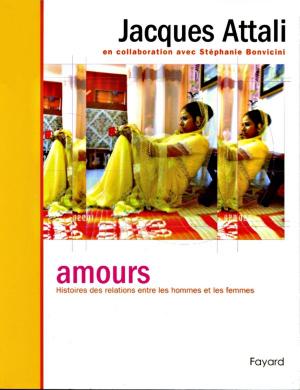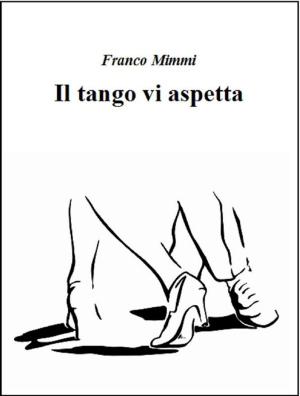| Author: | Monte Schulz | ISBN: | 9781606995181 |
| Publisher: | Fantagraphics | Publication: | March 7, 2011 |
| Imprint: | Fantagraphics | Language: | English |
| Author: | Monte Schulz |
| ISBN: | 9781606995181 |
| Publisher: | Fantagraphics |
| Publication: | March 7, 2011 |
| Imprint: | Fantagraphics |
| Language: | English |
Three women struggle as the Depression dawns.
In the summer of 1929, three strong-willed women, related by marriage, gather under one roof: widowed matriarch Maude Hennesey, whose belief in old-fashioned ways is shared by the ladies of her club; her pretty, spoiled daughter Rachel; and daughter-in-law Marie, who’s been forced by her husband, Harry, to uproot their two small children and take up residence in his family’s East Texan home until economic circumstances improve. Monte Schulz, son of celebrated Peanuts cartoonist Charles Schulz, examines not only the conflicts within the family, but the racial, gender and religious tensions of small-town Bellemont. As the summer wears on, Maude firmly lectures the unwelcome Marie on class distinctions, Rachel fights and flirts with her dashing pilot beau CW, and Marie reevaluates her marriage to salesman Harry during their separation, while fending off her employer Jimmy Delahaye’s slow seduction.
Meanwhile, storms gather as a child’s unnatural death sends shock waves throughout the community, instilling a sense of dread in both the reader and Marie, who’s already lost her firstborn to tragedy. Things come to a head when a black war hero, Julius, is accused of murder: surprising truths about these three women are revealed. In the calm after the storm, each woman learns to live her life on her own terms.
Schulz’ dynamic female characters, though accessible to a wide audience, have particular appeal for women. Schulz understands that readers find it refreshing when authors flesh out their protagonists by examining who they are through the prism of familial interactions, not just romantic relationships. Contemporary readers can identify with many of the issues that wife and parent Marie struggles with in The Last Rose of Summer, even though (and, perhaps, because) it concludes just as the Jazz Age is poised to shift into the Great Depression.
Praise for Schulz’s previous book, This Side of Jordan:
“Monte Schulz’s novel This Side of Jordan shows that like father like son — both superb!”—Ray Bradbury
"Beautifully written and thoroughly researched, a veritable time-machine that whirled me through time to the dirty back roads of the American Midwest in the year before the Depression. Did I mention how good the writing is? The writing is excellent… This book is a masterpiece of setting and storytelling.”—Cory Doctorow, BoingBoing
“[T]hose who savor authentic details of a bygone era will be rapt by Schulz’s delightful displays of staccato, wise-guy diction (‘Say, hatchet face, what’s the dope?’) and his cascading sheets of period description that set the scenes. Hand this straight-faced and multifaceted almost-satire to fans of the Southern Gothic tradition, all the way from Flannery O’Connor to John Kennedy Toole.”—Ian Chipman, Booklist
Three women struggle as the Depression dawns.
In the summer of 1929, three strong-willed women, related by marriage, gather under one roof: widowed matriarch Maude Hennesey, whose belief in old-fashioned ways is shared by the ladies of her club; her pretty, spoiled daughter Rachel; and daughter-in-law Marie, who’s been forced by her husband, Harry, to uproot their two small children and take up residence in his family’s East Texan home until economic circumstances improve. Monte Schulz, son of celebrated Peanuts cartoonist Charles Schulz, examines not only the conflicts within the family, but the racial, gender and religious tensions of small-town Bellemont. As the summer wears on, Maude firmly lectures the unwelcome Marie on class distinctions, Rachel fights and flirts with her dashing pilot beau CW, and Marie reevaluates her marriage to salesman Harry during their separation, while fending off her employer Jimmy Delahaye’s slow seduction.
Meanwhile, storms gather as a child’s unnatural death sends shock waves throughout the community, instilling a sense of dread in both the reader and Marie, who’s already lost her firstborn to tragedy. Things come to a head when a black war hero, Julius, is accused of murder: surprising truths about these three women are revealed. In the calm after the storm, each woman learns to live her life on her own terms.
Schulz’ dynamic female characters, though accessible to a wide audience, have particular appeal for women. Schulz understands that readers find it refreshing when authors flesh out their protagonists by examining who they are through the prism of familial interactions, not just romantic relationships. Contemporary readers can identify with many of the issues that wife and parent Marie struggles with in The Last Rose of Summer, even though (and, perhaps, because) it concludes just as the Jazz Age is poised to shift into the Great Depression.
Praise for Schulz’s previous book, This Side of Jordan:
“Monte Schulz’s novel This Side of Jordan shows that like father like son — both superb!”—Ray Bradbury
"Beautifully written and thoroughly researched, a veritable time-machine that whirled me through time to the dirty back roads of the American Midwest in the year before the Depression. Did I mention how good the writing is? The writing is excellent… This book is a masterpiece of setting and storytelling.”—Cory Doctorow, BoingBoing
“[T]hose who savor authentic details of a bygone era will be rapt by Schulz’s delightful displays of staccato, wise-guy diction (‘Say, hatchet face, what’s the dope?’) and his cascading sheets of period description that set the scenes. Hand this straight-faced and multifaceted almost-satire to fans of the Southern Gothic tradition, all the way from Flannery O’Connor to John Kennedy Toole.”—Ian Chipman, Booklist















